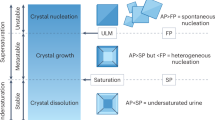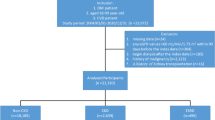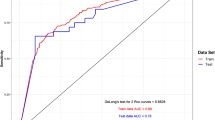Abstract
Dent’s disease (DD) involves nephrocalcinosis, urolithiasis, hypercalciuria, LMW proteinuria, and renal failure in various combinations. Males are affected. It is caused by mutations in the chloride channel CLCN5 gene. It has been suggested that DD is underdiagnosed, occurring in less overt forms, apparently without family history. A possible approach to this problem is to search for CLCN5 mutations in patients who may have a high prevalence of mutations: end-stage renal disease (ESRD) patients with previous calcium, struvite, or radio-opaque (CSR) stones. We looked for CLCN5 mutations in 25 males with ESRD–CSR stones selected from all of the patients (1,901 individuals, of which 1,179 were males) of 15 dialysis units in the Veneto region. One DD patient had a new DD mutation (1070 G>T) in exon 7. The new polymorphism IVS11–67 C>T was detected in intron 11 in one patient and one control. We also found 28 females with ESRD and stone history, and seven more males with ESRD and non-CSR stones. The prevalence of stone formers among dialysis patients in our region was 3.2%, much lower than the prevalence observed in older studies. Struvite stones continue to play a major role in causing stone-associated ESRD .
Similar content being viewed by others
Log in or create a free account to read this content
Gain free access to this article, as well as selected content from this journal and more on nature.com
or
References
Frymoyer PA, Scheinman SJ, Dunham PB, Jones DB, Hueber P, Schroeder ET (1991) X-linked recessive nephrolithiasis with renal failure. N Engl J Med 325:681–686
Gambaro G, Favaro S, D’Angelo A (2001) Risk for renal failure in nephrolithiasis. Am J Kidney Dis 37:233–243
Gambaro G, Reis-Santos JM, Rao N (2004) Nephrolithiasis: why doesn’t our “learning” progress? Eur Urol 45:547–556
Gasser RB, Zhu XQ (1999) Sequence-based analysis of enzymatically amplified DNA fragments by mutation detection techniques. Parasitol Today 15:462–465
Gupta M, Bolton DM, Gupta PN, Stoller ML (1994) Improved renal function following aggressive treatment of urolithiasis and concurrent mild to moderate renal insufficiency. J Urol 152:1086–1090
Hoopes RR, Raja KM, Koich A, Hueber P, Reid R, Knohl SJ, Scheinman SJ (2004) Evidence for genetic heterogeneity in Dent’s disease. Kidney Int 65:1615–1620
Hoopes RR Jr, Shrimpton AE, Knohl SJ, Hueber P, Hoppe B, Matyus J, Simckes A, Tasic V, Toenshoff B, Suchy SF, Nussbaum RL, Scheinman SJ (2005) Dent disease with mutations in OCRL1. Am J Hum Genet 76:260–267
Igarashi T, Hayakawa H, Shiraga H, Kawato H, Yan K, Kawaguchi H, Yamanaka T, Tsuchida S, Akagi K (1995) Hypercalciuria and nephrocalcinosis in patients with idiopathic low molecular weight proteinuria in Japan. Is this identical to Dent’s disease in the United Kingdom? Nephron 69:242–247
Jungers P, Joly D, Barbey F, Choukroun G, Daudon M (2004) ESRD caused by nephrolithiasis: prevalence, mechanisms, and prevention. Am J Kidney Dis 44:799–805
Lim LP, Burge CB (2001) A computational analysis of sequence features involved in recognition of short introns. Proc Natl Acad Sci U S A 98:11193–11198
Lloyd SE, Gunther W, Pearce SH, Thomson A, Bianchi ML, Bosio M, Craig IW, Fisher SE, Scheinman SJ, Wrong O, Jentsch TJ, Thakker RV (1997) Characterisation of renal chloride channel, CLCN5, mutations in hypercalciuric nephrolithiasis (kidney stones) disorders. Hum Mol Genet 6:1233–1239
Ludwig M, Utsch B (2004) Dent disease-like phenotype and the chloride channel ClC-4 (CLCN4) gene. Am J Med Genet 128:434–435
Majewski J, Ott J (2002) Distribution and characterization of regulatory elements in the human genome. Genome Res 12:1827–1836
Murakami M, Yamamoto H, Ueda Y, Murakami K, Yamauchi K (1991) Urinary screening of elementary and junior high-school children over a 13-year period in Tokyo. Pediatr Nephrol 5:50–53
Reinhart SC, Norden AG, Lapsley M, Thakker RV, Pang J, Moses AM, Frymoyer PA, Favus MJ, Hoepner JA, Scheinman SJ (1995) Characterization of carrier females and affected males with X-linked recessive nephrolithiasis. J Am Soc Nephrol 5:1451–1461
Scheinman SJ (1998) X-linked hypercalciuric nephrolithiasis: clinical syndromes and chloride channel mutations. Kidney Int 53:3–17
Scheinman SJ, Cox JP, Lloyd SE, Pearce SH, Salenger PV, Hoopes RR, Bushinsky DA, Wrong O, Asplin JR, Langman CB, Norden AG, Thakker RV (2000) Isolated hypercalciuria with mutation in CLCN5: relevance to idiopathic hypercalciuria. Kidney Int 57:232–239
Thakker RV (2000) Pathogenesis of Dent’s disease and related syndromes of X-linked nephrolithiasis. Kidney Int 57:787–793
US Renal Data System (1999) Annual report. Incidence, prevalence of ESRD. Am J Kidney Dis 34:S40–S50
Viterbo R, Mydlo JH (2002) Incidence and management of dialysis patients with renal calculi. Urol Int 69:306–308
Worcester E, Parks JH, Josephson MA, Thisted RA, Coe FL (2003) Causes and consequences of kidney loss in patients with nephrolithiasis. Kidney Int 64:2204–2213
Wrong OM, Norden AGW, Feest TG (1994) Dent’s disease; a familial proximal renal tubular syndrome with low-molecular-weight proteinuria, hypercalciuria, nephrocalcinosis, metabolic bone disease, progressive renal failure and a marked male predominance. Q J Med 84:473–493
Acknowledgments
The Veneto Collaborative Study Group on Dent’s Disease comprised the following members: E. De Paoli Vitali, Belluno; G. Bonadonna, Camposampiero; C. Cascone, Castelfranco Veneto, and Treviso; V. Goepel, Chioggia; G. Meneghel, Dolo; J. Nachtigal, F. Antonucci, Feltre; A. Fracasso, Mestre; P. Conz, C. Catalano, Monselice; A. Antonello, A. D’Angelo, L. Citron, F. Nalesso, R. Zagatti, U. Vertolli, Padova (two centers); M. Piva, Rovigo; T. Teodori, S. Donà di Piave; M. Nordio, Venezia; R. Dell’Aquila, Vicenza, and G. Gambaro, A. Lupo, Verona. This study was supported by the Italian Ministry of the University, program Cofin 40%, No. 2002062925-003, year 2002, and by Regione Veneto, Ricerca Sanitaria Finalizzata, Malattie Rare, year 2000 (No. 798/03/98).
Author information
Authors and Affiliations
Corresponding author
Additional information
Preliminary data from this paper were presented at the 10th International Symposium on Urolithiasis, Hong Kong, May 25–28, 2004, and published in abstract form in Urol Res 32:152–153, 2004
Rights and permissions
About this article
Cite this article
Tosetto, E., Graziotto, R., Artifoni, L. et al. Dent’s disease and prevalence of renal stones in dialysis patients in Northeastern Italy. J Hum Genet 51, 25–30 (2006). https://doi.org/10.1007/s10038-005-0317-x
Received:
Accepted:
Published:
Issue date:
DOI: https://doi.org/10.1007/s10038-005-0317-x
Keywords
This article is cited by
-
Diagnostic policies on nephrolithiasis/nephrocalcinosis of possible genetic origin by Italian nephrologists: a survey by the Italian Society of Nephrology with an emphasis on primary hyperoxaluria
Journal of Nephrology (2023)
-
Dent’s disease: clinical features and molecular basis
Pediatric Nephrology (2011)
-
Family history may be misleading in the diagnosis of Dent’s disease
Urological Research (2006)



